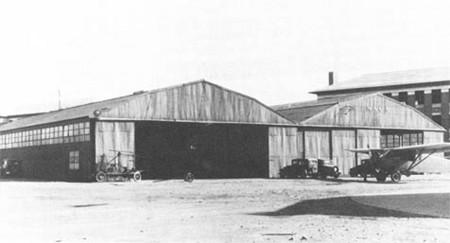The National Park Service acquired its first plane, a used 1928 Fairchild FC-2W2, in 1936. Now privately owned, the venerable plane is still flying, and once again wears the National Park Service livery.
At the height of the Great Depression in the 1930s, the Outer Banks region of North Carolina – now home to Cape Hatteras National Seashore, Cape Lookout National Seashore, Wright Brothers National Memorial, and Fort Raleigh National Historic Site -- was sprinkled with Civilian Conservation Corps camps working on dune stabilization projects and doing related chores. In their attempts to stabilize the dunes, the CCC crews erected prodigious quantities of sand fencing -- nearly 600 miles of it – in addition to planting trees and grasses.
This presented the National Park Service with serious communication and transportation problem. The all-weather roads, vital bridges, convenient causeways, and efficient ferry service that Outer Banks motorists take for granted today were absent, barely passable, or subject to frequent closure in the 1930s.
In 1936, the Park Service finally acquired what it really needed – an airplane. It was a 1928 Fairchild FC-2W2 (number N3934) that had recently been owned by the National Advisory Committee for Aeronautics (NACA). The agency, NASA’s predecessor, had purchased the 2W2 new from the factory and maintained it properly, so it was still in very good condition. The accompanying photo shows the plane when NACA still owned it.
The sturdy 2W2 provided the Park Service with a very reliable means to shuttle passengers, patients, payroll, supplies, equipment, tools, and various odds and ends to and from the CCC camps. It really got the job done.
That the plane should have done so well in Outer Banks service is not very surprising in retrospect. The FC-2W2, which was built to carry up to seven passengers, gained a reputation for being unusually robust. In fact, various versions of the FC-2W2 (only 31 of which were manufactured) have [url=http://www.eaa231.org/Museum/StarsAndStripes/StarsAndStripes.htm]
performed remarkably well[/url] as wheeled, ski, or float-equipped bush planes in Mexico, Canada, Alaska, China, and even in Antarctica.
It was an FC-2W2 that provided Canada's first international passenger service between Montreal and New York. Another 2W2 was used for Santiago-to-Buenos Aires service over the Andes. The famed “Stars and Stripes” 2W2, which was donated to the Smithsonian Museum in 1962, performed nearly 200 hours of service in the Antarctic before being used as a crop duster and photo ship.
J. D. “Dave” Driskill piloted the plane for the Park Service. Though not known outside aviation circles, Driskill was one of the better accomplished of this country’s aviation pioneers. He was, among other things, America’s first licensed helicopter pilot. The fact that Driskill survived hundreds of flights in the Outer Banks, one of America’s windiest and stormiest regions, testifies to his considerable skills. Owing to his many exploits and numerous aviation firsts in the region, Driskill was dubbed the The Re-Discoverer of the Outer Banks. “The Wright Brothers brought aviation to the world, but Dave Driskill brought aviation to the Outer Banks.”
There is a pictorial history of Dave Driskill’s career in the Ready Room at North Carolina’s Dare County regional Airport.
Driskill went on to distinguish himself as a highly skilled test pilot. Although he had the Right Stuff, his luck finally ran out on October 3, 1949, when the Kellett XR-10 prototype helicopter he was flight testing suffered a catastrophic failure of its control system.
The Park Service’s first plane has fared better. Privately owned now, it is painted as it was when Dave Driskill flew it over the Outer Banks in the 1930s. And it is still flying. In fact, it is the only FC-2W2 in the world that is still flying.
One of the more nostalgic events in Park Service aviation took place on December 17, 2003, when the old 2W2, which had been flown on the National Air Tour from Dearborn, Michigan, to Kill Devil Hills, took part in the Centennial of Flight celebration at Wright Brothers National Memorial.




Add comment